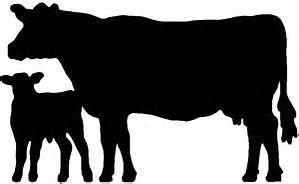Improving suckler herd management through nutrition and hygiene around calving time to enhance productivity and reduce antibiotic use
Health issues cost the UK beef industry an estimated £133m in lost productivity and mortality. Scouring in calves alone accounts for £11 million of those losses. On average only 88% of calves are born alive (per 100 cows/heifers to bull) and of those, 4% die between birth and weaning. Common causes include bovine virus diarrhoea (BVD), scouring, pneumonia, cryptosporidium, Rotavirus, Coccidiosis, and corona viruses (O’Shaughnessy et al., 2015).
At the same time, there is an urgent need to reduce antibiotic use to slow down the development of Antimicrobial Resistance (AMR) and prolong the useful life of treatments for medical and agricultural use. While in general terms, antibiotic use is lower in beef compared to sheep systems, they are widely used in beef systems against some key problems including E-coli infections, pneumonia and coccidiosis.
The project involves four farmers from Ceredigion and Carmarthenshire which all have herds of between 30 and 45 suckler cows. The project will run from November 2020 to June 2022. They aim to improve the management and nutrition of their suckler herds around calving to improve animal health and productivity, while reducing the use of antibiotics. They will work towards this by developing and implementing management plans which will include:
- Ration formulation, based on metabolic profiles and feed/ forage analysis
- Strategies to increase colostrum quality and absorption
- Strategies for preventative management of diseases, including cleaning and hygiene protocols, based on the results of bedding analysis, faecal sampling and post-mortem results
- Framework for decision making on antibiotic treatments
The impact of these approach on animal health and productivity will be assessed over the two years by measuring key performance indicators (KPIs) relating to growth and development, calf mortality and the incidence of key diseases. Any reductions in antibiotic usage will be measured against RUMA 2020 targets and monitored using the AHDB Electronic Medicine Hub for beef and sheep.
It is hoped that the benefits of the project will include:
- Improved cow and young stock health
- Reduced antibiotic usage in beef suckler herds
- Reduced costs and increased productivity
- Development of robust monitoring systems
- Better decision making based on the above

